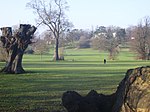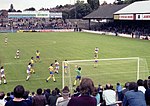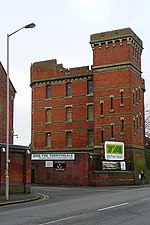Murder of Mary-Ann Leneghan
2000s in Berkshire2000s missing person cases2000s trials2005 in England2005 murders in the United Kingdom ... and 12 more
21st century in Reading, BerkshireDeaths by person in EnglandGang rape in EuropeKidnappings in EnglandMay 2005 crimesMay 2005 events in the United KingdomMurder in BerkshireMurder trialsRape in EnglandRape trialsTrials in EnglandViolence against women in England
On the early morning of 7 May 2005, 16-year-old Mary-Ann Leneghan was stabbed to death in Prospect Park in Reading, Berkshire, UK. The previous evening, Leneghan and a friend had been kidnapped and subjected to hours of assault, rape, and drugging in a local hotel. Her friend was shot in the head, but survived. Six men, four of whom were on probation at the time of the attack, were tried and received life sentences.
Excerpt from the Wikipedia article Murder of Mary-Ann Leneghan (License: CC BY-SA 3.0, Authors).Murder of Mary-Ann Leneghan
Tilehurst Road, Reading Dee Park
Geographical coordinates (GPS) Address Nearby Places Show on map
Geographical coordinates (GPS)
| Latitude | Longitude |
|---|---|
| N 51.4506 ° | E -1.0097 ° |
Address
Tilehurst Road
RG30 2NE Reading, Dee Park
England, United Kingdom
Open on Google Maps






